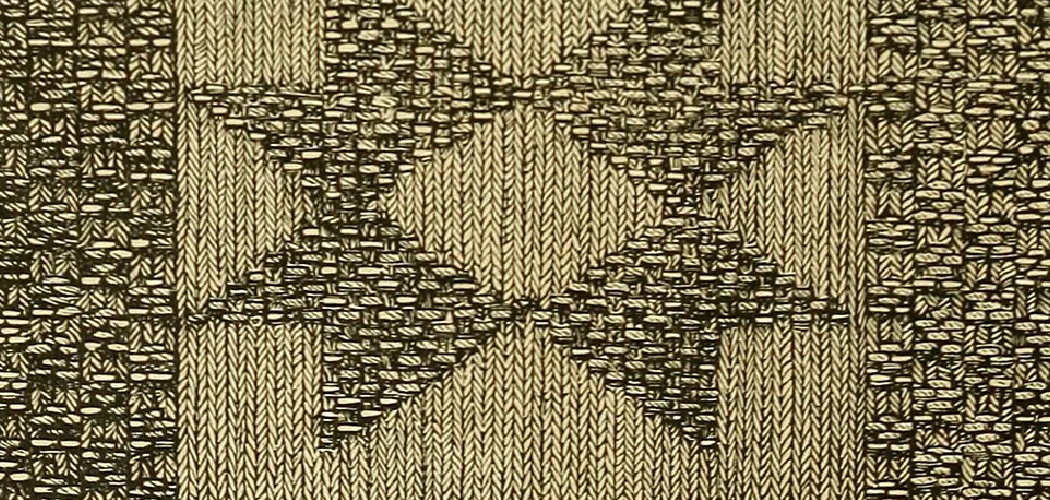As a beginner in crochet, one of the most essential steps you must learn is how to fasten off your work at the end. Fastening off properly is key for other crafters or makers who want to wash and use your creation, like clothing items or home decor pieces.
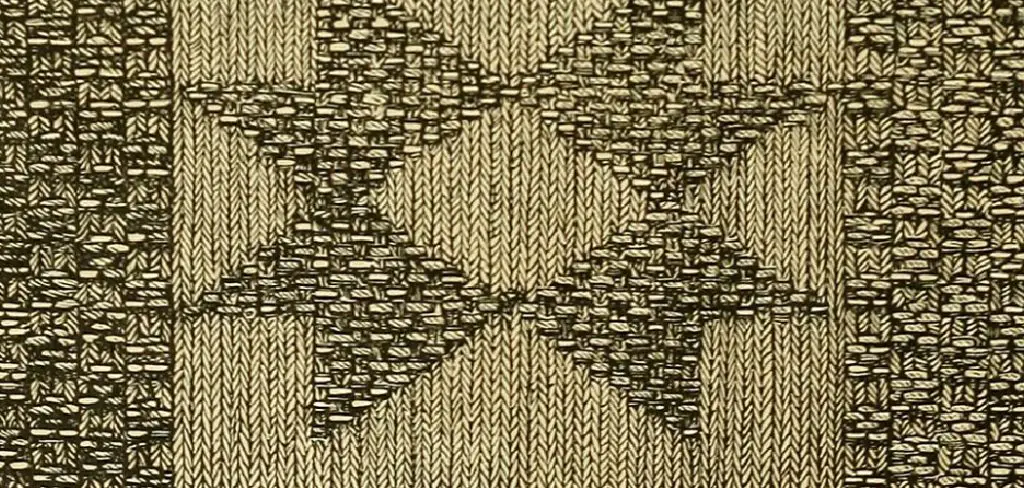
Not only that, but it’s also important for ensuring quality so that all stitches are secured and won’t come undone during wear. In this blog post, we’ll walk you through everything you need to know about how to fasten off crochet – from when to do it to different methods that experts have tried repeatedly!
What Does It Mean to Fasten off in Crochet?
Fastening off in crochet means finishing off a project or piece of stitching. It’s the last step you take to secure all your stitches, and it’s important because it ensures that your crochet work won’t unravel over time. Additionally, fastening off makes sure that your project looks neat and finished.
11 Methods on How to Fasten off Crochet
1. Crochet Hook
The most common way to fasten off crochet is to simply insert your hook into the next stitch, yarn over, and pull through both loops on the hook. This will leave you with one loop on the hook. Then, cut your yarn and pull it through the loop to secure it. This closure method is also known as a slip stitch or single crochet fasten-off.
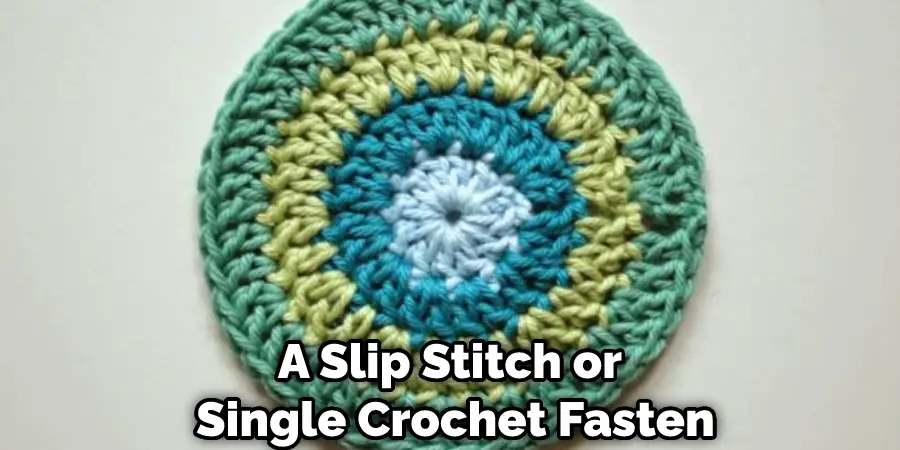
2. Cut the Yarn
Once you have one loop on the hook, cut the yarn leaving a tail of about 6 inches. Insert your hook into the loop and pull the tail through the loop. This will create a knot that will secure your work. Pull the tail tight and trim any excess yarn. If you have a large number of stitches, secure the tail by threading it through the stitches until it comes to the end of your work. This will help to prevent the tail from coming undone.
3. Weave in Ends
After you have secured your work with a knot, you will need to weave in the ends to prevent them from unraveling. To do this, simply thread the tail of yarn through a tapestry needle and weave it in and out of the stitches around the edge of your work. Once you have woven in the end, trim it close to your work. This will help to keep your work looking neat and prevent unraveling. With a little practice, you’ll be able to weave in ends with ease.
4. Slip Stitch
Another way to fasten off crochet is to slip stitch into the next stitch, yarn over, and pull through both loops on the hook. This will leave you with one loop on the hook. Cut the yarn leaving a tail of about 6 inches, and proceed to weave in the end as described above.
This is an easy way to close off a project without the bulk of a knot. If you’re looking for an invisible way to finish off a project, the slip stitch is your best bet. Make sure to pull the yarn tight when you slip stitch to make sure it’s secure.

5. Single Crochet
You can also fasten off crochet by working a single crochet stitch into the next stitch, yarn over and pull through both loops on the hook, then yarn over and pull through both loops on the hook again. This will leave you with one loop on the hook. Cut the yarn leaving a tail of about 6 inches, and proceed to weave in the end as described above.
This final single crochet stitch is often referred to as a slip stitch. You can also use it to join two pieces of work together or to close a round. It is also a great way to finish off the edge of a project, such as an afghan or scarf. You can even use it to join motifs together. To do this, insert the hook through both loops of the single crochet stitch in one piece, then yarn over and pull through the two loops on the hook. This will create a single crochet stitch that connects the two pieces of work together.
6. Double Crochet
To fasten off with a double crochet, work a double crochet into the next stitch, yarn over, and pull through all three loops on the hook. Cut the yarn leaving a tail of about 6 inches, and proceed to weave in the end as described above.
To start a new color with a double crochet, pull the new yarn through the last loop of the previous stitch, as if to make a single crochet, then yarn over and pull through both loops on the hook. Now you are ready to continue with a double crochet stitch in the new color.
7. Half Double Crochet
To fasten off with a half double crochet, work a half double crochet into the next stitch, yarn over and pull through all three loops on the hook. Cut yarn, leaving a tail of about 6 inches, and proceed to weave in the end as described above. Half double crochet is a slightly stretchier stitch than single crochet, making it ideal for projects that need to accommodate movement or growth.
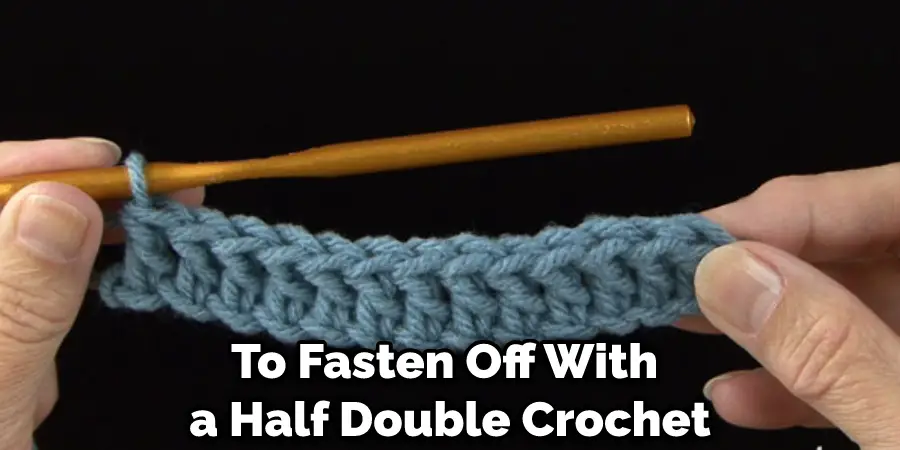
It’s also a great stitch for making quick, simple blankets and accessories. If you’re just getting started with crochet, a half-double crochet is a great way to practice the basics without having to worry about too many complicated instructions. Give it a try, and you’ll soon find out why half-double crochet is such an essential stitch in the crochet world!
8. Chain Stitch
To fasten off with a chain stitch, work a chain stitch into the next stitch, yarn over and pull through both loops on the hook. Cut yarn, leaving a tail of about 6 inches, and proceed to weave in the end as described above.
Because this stitch is a bit tricky and often comes out uneven, it’s best to practice it first on a swatch of the fabric before using it in a project. If done properly, a chain stitch can provide a neat and secure finish to any project. However, if it looks too uneven or sloppy, then it’s usually better to choose a different method of fastening off.
9. Picot Stitch
To fasten off the crochet with a picot stitch, work a picot stitch into the next stitch, yarn over, and pull through both loops on the hook twice. Cut yarn, leaving a tail of about 6 inches, and proceed to weave in the end as described above. To finish the picot stitch, pull the tail through the loop on the hook and tighten it.
Your crochet project is now complete. However, to make sure that the picot stitch is secure, you may want to add an extra knot. Do this by making a second knot at the base of the picot stitch before weaving in the end. Though it is not necessary, it will help to ensure that the stitches remain in place and keep your project looking neat.
10. Invisible Finish
An invisible finish is often used when making clothing or items that will be washed regularly, such as baby blankets or sweaters. To do this, begin by working your last stitch as normal. Cut the yarn leaving a tail of about 6 inches, and insert it through the loop on the hook.
Pull tightly to secure the knot and weave in the ends as described above. This will give your project a neat, finished look without the bulk of a knot. It is important that you securely tie off the yarn so that it does not unravel in the washing machine.
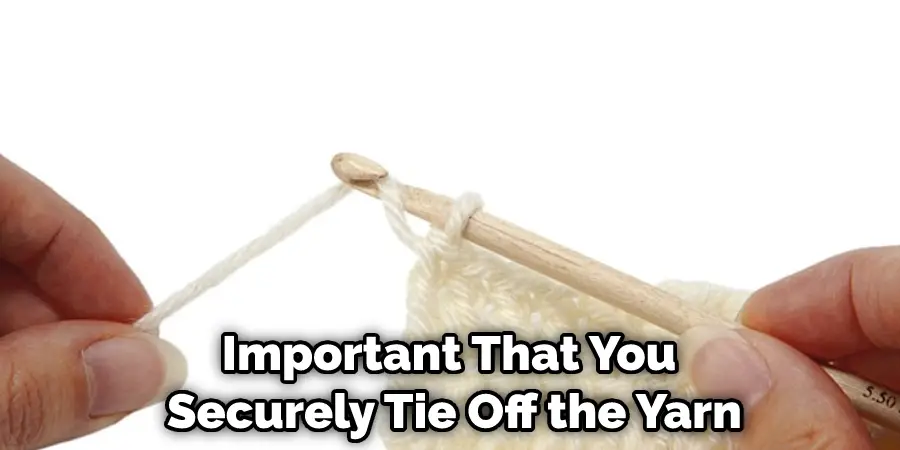
11. Slip Stitch
To fasten off with a slip stitch, yarn over and pull through both loops on the hook. Cut the yarn leaving a tail of about 6 inches, and proceed to weave in the end as described above. The slip stitch is a great way to join two pieces of fabric together since it can be done quickly with minimal bulk.
It’s also a very secure option for adding edging or trim to a project without having to worry about it coming undone. If you’re looking for something to add a bit of extra detail or just want to join two pieces of fabric together, a slip stitch is a perfect choice!
These are all different ways to fasten off crochet, so choose whichever method is most comfortable for you! Just remember that when fastening off, you should always make sure that all stitches are secured and won’t come undone during wear. With these tips in mind, you’ll be able to create beautiful finished pieces with ease!
Things to Consider When Fastening off Crochet
1. Gauge:
When fastening off crochet, it’s important to make sure the stitches you are securing are all the same size and tension. This is especially true when making garments or items that will be seen close-up. To ensure uniformity, use a gauge swatch to measure your crochet stitches before fastening them off.
2. Tension:
Keep your tension tight when fastening off the crochet to ensure a secure and polished finish. You should be able to see the stitches clearly without any holes or gaps in the fabric. This can often be achieved by using the same hook size you used while doing the project, but if you find yourself struggling to get an even tension, switch down to a smaller hook size.
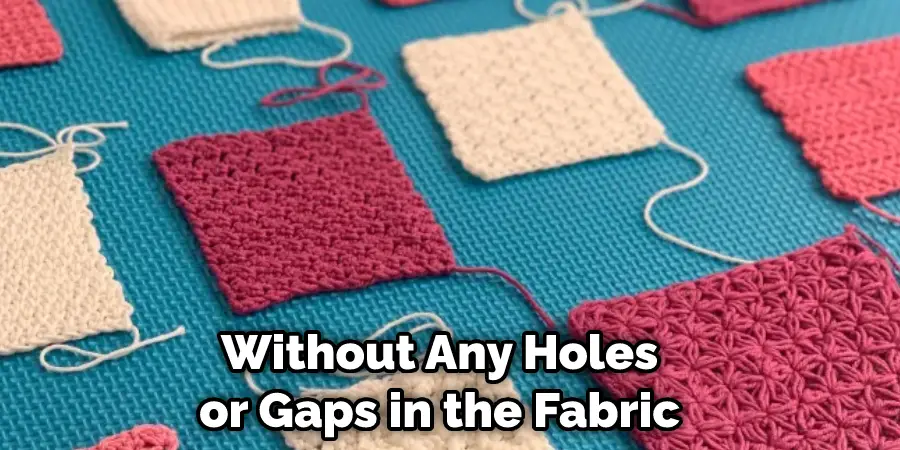
3. Ends:
When fastening off the crochet, leave some additional yarn tail so that the end can be woven in properly for a finished look. Make sure the yarn tails are securely tucked away from both sides of your fabric so they won’t work themselves loose over time. Weaving them into nearby stitches or using a yarn needle can help to secure them.
4. Knots:
If you’re working with a yarn that is prone to fraying or snagging, you may want to add an extra knot when fastening off the crochet. This will help ensure that your project stays secure and intact even after repeated washes and wears. Make sure to do this before weaving in the ends for a neat finish.
These tips should help you achieve beautiful finished pieces with ease! With practice, fastening off crochet will become second nature – so don’t forget to keep practicing and have fun!
How Do I Make Sure My Crochet Is Secure?
When it comes to making sure your crochet projects stay secure, the type of yarn you use makes a big difference. Choose one that is strong and durable so that it won’t unravel over time. For best results, look for 100% wool or acrylic yarns since these are the most resilient materials.
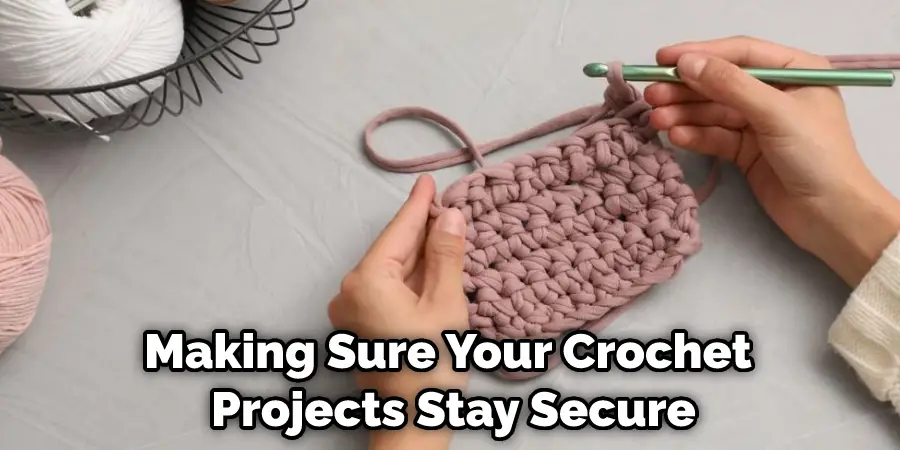
Once you’ve chosen the right yarn, make sure that you fasten off your crochet correctly by using one of the methods outlined above. It is also important to weave in all ends securely with a yarn needle so that they won’t come undone over time. Finally, use a tight gauge and tension when crocheting your project to ensure all stitches are secure.
Conclusion
When you want to finish your work and move on to the next project, it’s important to know how to fasten off crochet. This will ensure that your work is secure and won’t unravel.
There are a few different ways that you can do this, so choose the one that works best for you. With a little practice, you’ll be able to fasten off crochet quickly and easily.
You Can Check It Out To Make Paper Pine Cones

